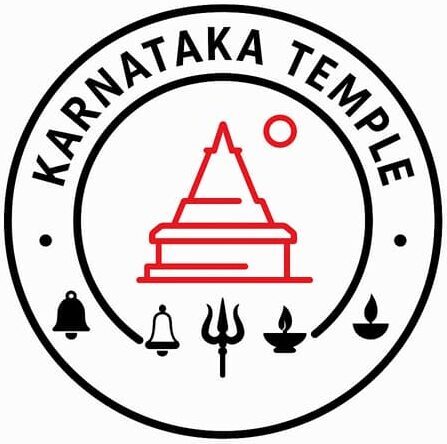Mantra Mangalya (Kuvempu) — A Simple, Equality-Based Marriage Concept
Mantra Mangalya (ಮಂತ್ರ ಮಾಂಗಲ್ಯ) is a Kannada marriage concept articulated by poet-laureate Kuvempu that places simple vows, mutual respect, and dignity above spectacle. Rooted in Karnataka’s literary and social-reform spirit, it encourages equality between partners and a clear stand against dowry. The ceremony keeps rituals minimal and centers on meaningful Kannada vows that affirm shared responsibility, trust, and compassion. Families may adopt this format at home or in community spaces while completing legal marriage registration as per state rules. This guide explains the meaning, core principles, sample vows, step-by-step flow, and practical tips for a graceful, budget-friendly wedding.
Why Kuvempu Proposed Mantra Mangalya
1 Why Change Was Needed
Kuvempu (Kuppali Venkatappa Puttappa), proponent of Vishvamanava Tattva (Universal Humanism), saw that many traditional weddings pushed families into debt, emphasized caste/religion, normalized dowry, and treated women unequally—burying the true values of mutual consent and dignity.
2 Kuvempu’s Solution
Mantra Mangalya is a simple, rational, equality-based wedding model that centers Kannada vows and shared responsibility, rejects dowry, trims excess ritual, and encourages proper legal registration.
3 First Mantra Mangalya Wedding (Tejaswi, 1966)
Kuvempu proved it in practice: the first widely noted ceremony in this format was for his son, Poornachandra Tejaswi, in 1966—setting a clear, inspiring precedent.
The Core Concept: What is Mantra Mangalya?
Side-by-side differences between a conventional wedding and Mantra Mangalya (ಮಂತ್ರ ಮಾಂಗಲ್ಯ).
The Ceremony: What Actually Happens
A calm, value-first gathering that centers on vows rather than rituals, costs, or caste/religious barriers.
1 Setting
Held in a simple, peaceful space—home, hall, or nature—with minimal guests (originally kept near ~200). Décor is modest; the focus is on dignity and togetherness.
2 No Priest, No Fire
There is no priest and no ritual elements like homa (sacred fire). An elder or loved one facilitates; the couple stands as equals.
3 The Vows (“Mantra”)
The heart of the ceremony is reading the Mantra Mangalya text—often called a secular, progressive “Marriage Code” (Vivaha Samhite)—in Kannada (or one’s mother-tongue). The vows affirm equality, shared responsibility, and a clear rejection of dowry.
Key Messages from the Vows
“You are now free from all mental, spiritual, and social shackles.”
“The wife is as independent and equal as the husband.”
“Love is the only means that makes a husband and wife live together; all rituals are vain without it.”
“You are liberated from all narrow religions, false beliefs, and superstitions.”
After the vows, complete the legal marriage registration as per applicable rules. Families may add simple, optional symbolic acts (e.g., garlands) without diluting the core values.
Foundations of Mantra Mangalya
1) Vishvamanava Tattva (Universal Humanism)
Mantra Mangalya is the practical face of Kuvempu’s core idea—Vishvamanava Tattva (ವಿಶ್ವಮಾನವ ತತ್ತ್ವ). It asks us to rise beyond narrow identities of caste, religion, language, race, and gender.
The wedding becomes a first step: the couple consciously rejects artificial divisions and chooses love, dignity, and shared humanity.
“Every child is born a Universal Human Being; society narrows them as they grow.” —paraphrased guiding motto
2) “Marriage Code” (Vivaha Samhite) — Key Lines
- Reject ritual authority: No priestly control; beware leaders who misuse God’s name.
- Equality & autonomy: “The wife is as independent and equal as the husband.”
- Human values as the ‘only god’: Society’s humane values are first and final.
- Honest belief: Believe/disbelieve only from genuine self-experience—no forced dogma.
- No sacred time: “Human life itself is auspicious”—no hunt for ‘good’ or ‘bad’ hours.
3) Cultural Impact & Evolution
- Adopted by movements: Farmer groups like KRRS (1970s–80s) in Old Mysuru & Malnad used it to avoid debt-heavy weddings.
- Activist signal: Some couples wore green shawls, showing it’s a social stand, not just a private choice.
- Today’s debate: Admirers warn against “grand” versions—lavish expense dilutes the core aim of simplicity and low cost.
Notes: quotes above are paraphrased for clarity; customs vary by family/community.
Who Adopted Mantra Mangalya?
1) Foundational Wedding (1966)
Kuvempu conducted the first Mantra Mangalya for his son K. P. Poornachandra Tejaswi and R. Rajeshwari in 1966. The format grew from what was called a “Sarala Vivaha” (simple wedding) into the published Mantra Mangalya text with a concise “Marriage Code” (Vivaha Samhite).
2) Public Figures
Public adopters have included film personalities and elected leaders who favor simple, non-ostentatious ceremonies. Examples often cited are actress Pooja Gandhi choosing the format in 2023, Araga Jnanendra encouraging such weddings within his family and community programs, and actor Mithra promoting the concept through venues designed for simple celebrations.
3) Social & Intellectual Adopters
Farmer movements such as KRRS helped popularize Mantra Mangalya in Old Mysuru and Malnad as a low-cost, debt-light alternative. Many writers, academics, rationalists, and inter-caste/inter-faith couples have chosen it to reject ritual excess and dowry. Initiatives like Manava Mantapa in Mysuru have presided over large numbers of such weddings over the years.
Recommended Book (Kannada)
Mantra Mangalya is a simple, equality-first wedding model that centers vows and mutual consent over ritual show. It rejects dowry, caste/religious barriers, and expensive display so families can celebrate with dignity and peace. The format is flexible—guided by an elder, held at home or a community space—with clear vows in Kannada or one’s mother tongue. After the vows, couples should complete legal registration and keep hospitality modest, meaningful, and inclusive. If you plan this ceremony, begin with the vows and guest list, choose a simple venue, and let love and shared responsibility lead every decision.

